A group project of
Eat healthy food
Design Thinking
Team Members
Kim Goddard Tofik Khan Rutuja Nehra Yunlan Fu


Problem Statement
America is one of the least healthy nations in the world. Who doesn't love burgers, our special Starbucks drinks, and indulging in decadent desserts? Most of the food we eat are packed with empty calories that make us crave more instead of consuming nutrient-rich foods that our bodies recognize when we have eaten enough. The benefits of eating whole foods instead of vitamins and supplements is clear, but which foods and how much?
How might we help people get 100% of their daily nutritional needs met through whole foods every day?
Research Objectives
To learn about the user’s experience, goals, needs, and pain points as they pertain to How might we educate and enable the user with tools to eat whole foods for a healthier lifestyle.
-
Learn eating habits
-
Learn shopping habits
-
Learn audience education level on healthier eating
-
Learn what people have done/doing to achieve their “healthy”: vitamins, diets, prep-services
-
Learn what pitfalls we need to help them overcome to achieve “real-food healthy”

Post-interview Analysis
We conducted 12 end-user interviews to collect qualitative feedback:
-
Where are they having the problem?
-
What are their pain points?
Each user takes about 45-60 minutes to answer 10 questions. We record between what users say and do.
Based on their feedback, we generate data to two archetypes and one journey map.

Archetype & Journey Map
The behavioural archetypes represent typical motivations, goals and general attitudes of the customers and also how these can change based on the quality of their experience with the brand over time.




The Situation
People don’t eat the full amount of nutrition that is optimal to thrive. To remedy this, people adapt lifestyle changes to fix or amend their diets and behaviors. While motivated, they’re learning about nutrition, how to get it, how to prepare it, as well as changing their habits and preconceptions to achieve better health.
-
People are either uneducated in– or want to improve their knowledge on– proper nutrition and techniques
-
There are a lot of resources and influences, so people don’t know which sources to rely on for nutrition
-
People don’t know how to make successful lifestyle changes stick



The Tension
Overwhelmed and unsure of what they’re learning and applying, as well as forming new habits; a person’s lack of confidence becomes their burden. Because old habits are easier than new ones, people tend to revert and ”fall off the wagon.” When they fall off, they feel they’ve failed and are therefore a failure, making it hard to get themselves back on the wagon.
-
People are afraid healthy changes will be a battle to keep motivated due to expense, restriction, complexity, and feelings of isolation and burden
-
People don't know about proper nutrition/cooking therefore scared of change
-
People think there’s too much information out there and are unsure what is reliable
-
People tend to define themselves by what they do instead of who they are

The Opportunity
Motivation and positive reinforcement is key to getting back on track to better eating and healthy habits. Regardless of their skill, a person needs confidence in where they’re going, validation that they’re doing a good job, reminders they’re making progress, and reassurance that though this is a change for one person, this person is one of many.
-
High amounts of rewards are needed throughout the healthy eating process
-
Consistent proof of progress is needed
-
A support structure, ready when desired, to provide accountability, empathy, and social interaction
-
Reliable educational opportunities to learn or broaden knowledge, skills, or even a person’s palate.
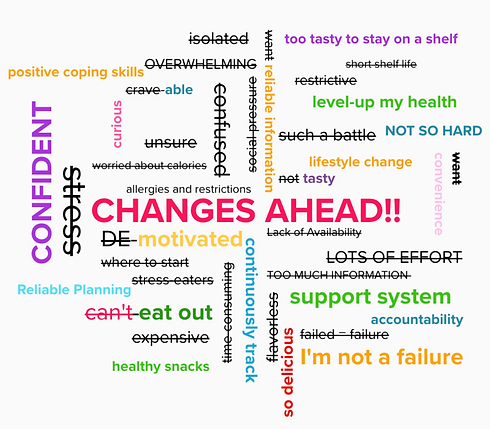
Competitors Analysis
Every brand can benefit from regular competitor analysis. We categorized three competitors.


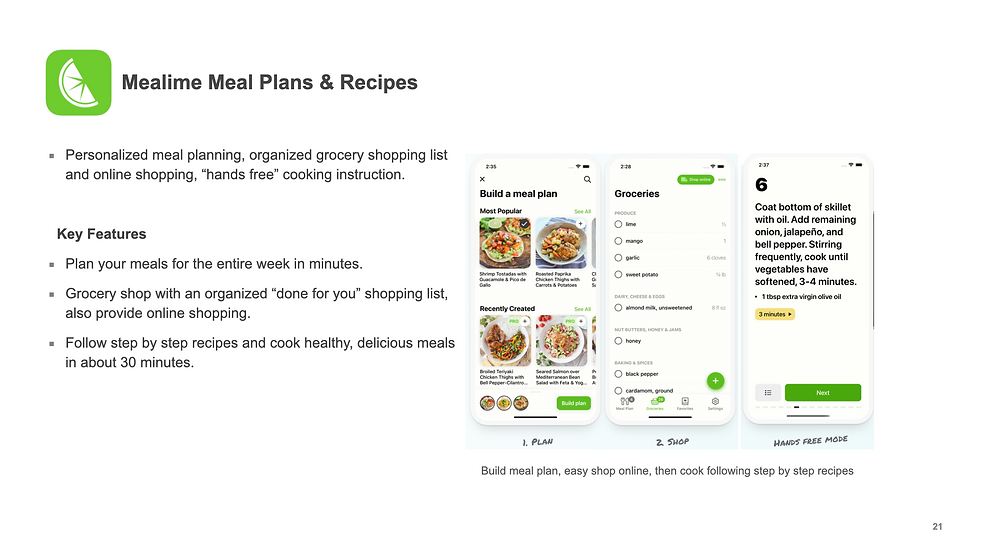

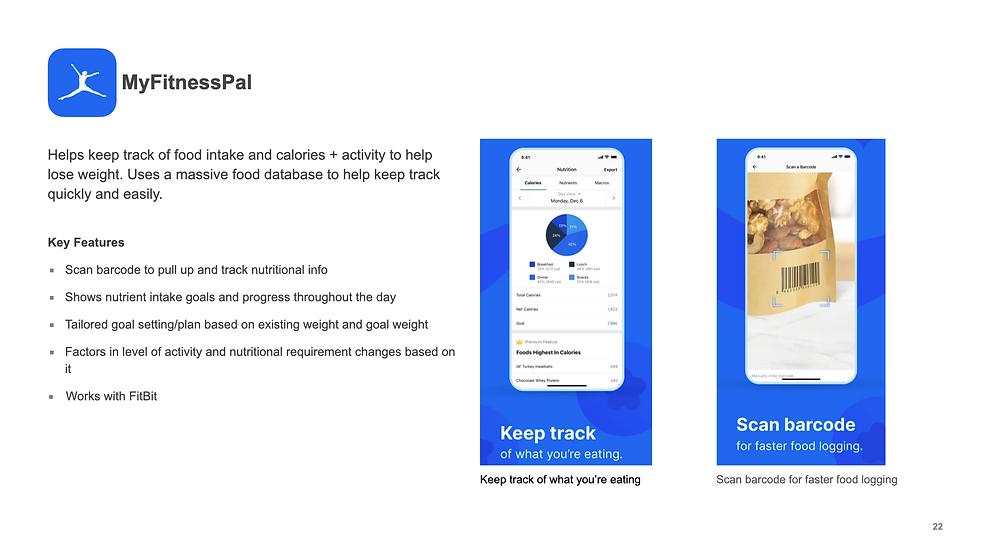

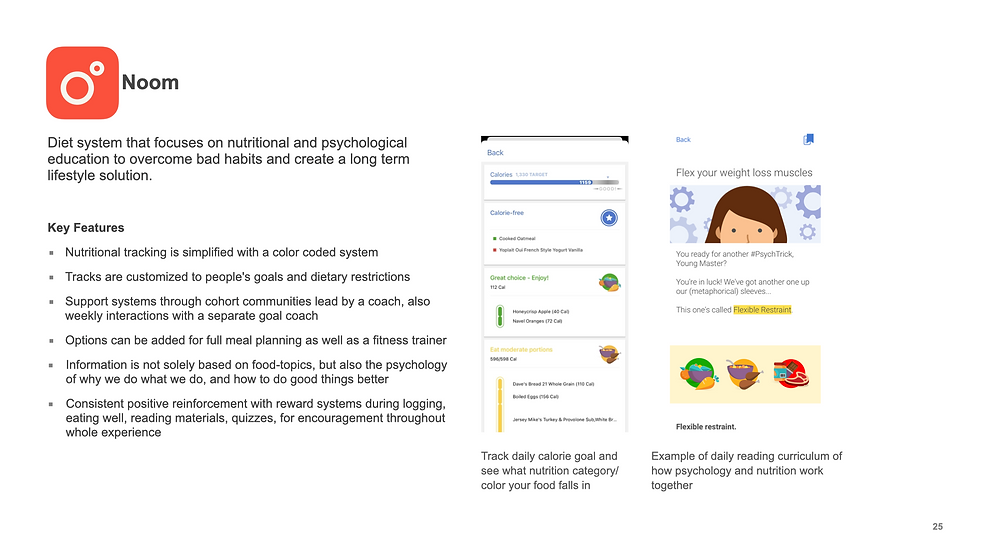

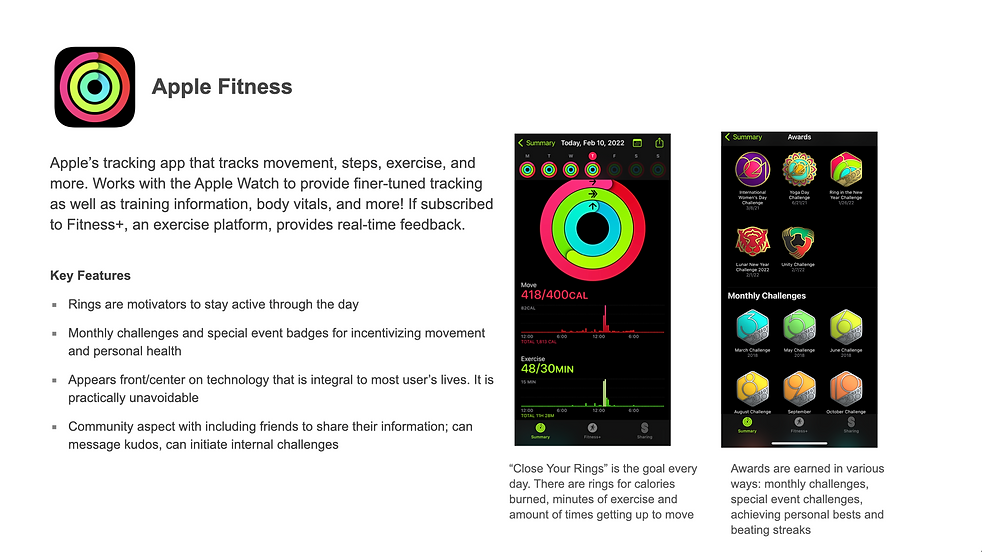










This Report
This document summarizes the insights generated during the design thinking phase of Eat Healthy Food. The insights from this report are intended to provide user-generated feedback and begin to identify:
-
To validate the user’s goals, needs, and pain points
-
Better learning about people’s existing eating habits
-
Help user get 100% of their daily nutritional needs met through whole foods every day
The outputs of this research will be used to identify development priorities, recommended changes to Eat Healthy Food, and generate “quick wins” which can be implemented to deliver immediate value to end users.
Project Duration:
Jan 2022-April 2022